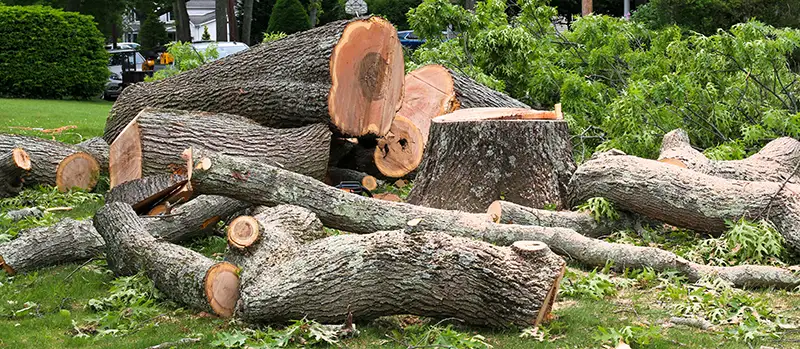Featured
Table of Contents
- – West Memphis, AR Tree Service Reviews: What Lo...
- – Local vs National Arborist Costs In West Memph...
- – West Memphis, AR Stump Removal Quote Charges
- – Comparing West Memphis, AR Tree Trimming: Pri...
- – West Memphis, AR Tree Service Billing Options
- – What's The Average Cost For An Stump Removal ...
- – Local Pricing For Stump Removal In West Memph...
- – Coverage Costs For Stump Grinding In West Me...
- – West Memphis, AR Stump Removal Pricing: What...
- – West Memphis, AR Stump Removal: Real Cost Br...
- – Low-Cost Stump Grinding In West Memphis, AR
- – Selecting The Right Stump Grinding In West M...
- – How Much Will A Arborist Cost Me In West Mem...
- – West Memphis, AR Stump Grinding Removal Costs
- – West Memphis, AR Tree Trimming Cost Breakdown

The subsections below offer more comprehensive details about prices, including an average range for each. TypeAverage Elimination CostPineConiferPalmMagnoliaArborvitaeAshCedarSweet GumEucalyptusSycamoreCypressOakMaplePoplar You can expect to pay between to eliminate a pine, depending upon its size. Removing a pine is among the more budget-friendly tasks unless it is one that has been around for several years and is quite large.
West Memphis, AR Tree Service Reviews: What Locals Say
Pines also have a tap root that grows deep into the soil, which can show to be harder to eliminate. The process itself involves a professional cutting the tree, clearing the base, cutting the surface area roots, getting rid of the stump, and finally dealing with the soil. Without an expert hand, you run the risk of leaving pine seedlings behind, which will fall from the roots of distressed pines.
Local vs National Arborist Costs In West Memphis, AR
The U.S. nationwide average for conifer elimination is roughly to have the conifer cut down, carried away, and the stump ground or gotten rid of totally. Conifers are usually much easier to eliminate, and although they can grow rather high, they do not cost a fortune to eliminate. Conifers consist of pine, spruce, fir, and juniper trees.
West Memphis, AR Stump Removal Quote Charges
While conifers are gorgeous, they eliminate native plants and certain types of lawn (stump removal). The average cost of palm removal depends on the height as much as the type, varying from.
Comparing West Memphis, AR Tree Trimming: Prices
That is why it is very important to know which type you are getting rid of. While you do not need an herbicide to kill a palm tree, there are some actions your elimination specialist will have to take to ensure the job is done correctly. There are 2 ways they can get rid of them: by slicing them down or digging them up.
West Memphis, AR Tree Service Billing Options
From there, they get rid of the real tree and then the stump. Anticipate to pay in between to remove this type of tree, depending on the exact size and information of the task.
What's The Average Cost For An Stump Removal In West Memphis, AR
There are three types: green, white, and black ash. With its gray-tinged bark, its leaves are green or purple in the spring and golden yellow or purplish-red in the fall.
Local Pricing For Stump Removal In West Memphis, AR

Due to the variation in height, the elimination cost difference is broad from. A coniferous, evergreen tree, the cedar is a hardy types.
Coverage Costs For Stump Grinding In West Memphis, AR
The growth of incorrect cedars varies from 50 feet approximately 230 feet high. Property owners might pay anywhere from, depending upon the roots. With star-shaped leaves and stunning fall colors, the sweet gum is thought about a medium to big tree. Delighting in complete sun, the sweet gum can not endure contamination.
West Memphis, AR Stump Removal Pricing: What To Expect
It has a huge root base of 40 to 50 feet, which affects the elimination expense. Generally, it costs between to remove a eucalyptus. Eucalyptus are not common all over, but they are rather big compared to others, which is why even the smaller sized ones are so expensive to get rid of. Initially from Australia, eucalyptus are invasive plants that grow in thick groves that take out native plants.
West Memphis, AR Stump Removal: Real Cost Breakdown
There are a handful of methods to do this, consisting of burning, pulling, grinding, or eliminating them with herbicide. Anticipate to pay in between to get rid of sycamores, based on the height, trunk size, and amount of work involved. Sycamores are among the biggest wood trees, normally varying from 60 to 100 feet high and as broad as 15 feet.
Low-Cost Stump Grinding In West Memphis, AR
The first 2 actions will expose the insides of the tree and cut off the circulation of nutrients up the trunk. From there, an expert uses herbicide to eliminate the tree and cuts down the trunk.
Selecting The Right Stump Grinding In West Memphis, AR: Price vs Quality
There are several kinds of Cypress trees, but the most common are the Leyland, Arizona, Bald, and Italian. The Bald Cypress grows in swampy or really damp areas while the others take pleasure in a dry, warm, or hot climate (stump removal). They can grow as tall as 80 to 100 feet high
How Much Will A Arborist Cost Me In West Memphis, AR

Prone to illness, the Cypress is one of the most valued woods for furnishings. The typical oak grows to around 60 feet, and depending on the complexity of the elimination, it costs an average of to get rid of. The exact size of your oak and the effort required to fell it affect what you will actually spend for removal in addition to any additional services like stump grinding.
West Memphis, AR Stump Grinding Removal Costs
Access to the trees and the roots will also impact the overall expense. Maples can easily mature to 100 feet or more and normally expense in between to remove from your residential or commercial property. The final cost depends upon the actual height and complexity of the job. Maples are normally amongst the more costly trees to get rid of because of their size and the work associated with the elimination.
West Memphis, AR Tree Trimming Cost Breakdown
Poplars are giants of the species. Growing as high as 90 to 115 feet, these massive timbers are mainly discovered in North America and consist of the aspen, cottonwood, and balsam trees. Boasting an extensive root system, poplars can be costly to eliminate when fully grown. The process to remove trees involves all the trimming and cutting of the branches and trunk, bringing it down to a stump.
Table of Contents
- – West Memphis, AR Tree Service Reviews: What Lo...
- – Local vs National Arborist Costs In West Memph...
- – West Memphis, AR Stump Removal Quote Charges
- – Comparing West Memphis, AR Tree Trimming: Pri...
- – West Memphis, AR Tree Service Billing Options
- – What's The Average Cost For An Stump Removal ...
- – Local Pricing For Stump Removal In West Memph...
- – Coverage Costs For Stump Grinding In West Me...
- – West Memphis, AR Stump Removal Pricing: What...
- – West Memphis, AR Stump Removal: Real Cost Br...
- – Low-Cost Stump Grinding In West Memphis, AR
- – Selecting The Right Stump Grinding In West M...
- – How Much Will A Arborist Cost Me In West Mem...
- – West Memphis, AR Stump Grinding Removal Costs
- – West Memphis, AR Tree Trimming Cost Breakdown
Latest Posts
Request Tree Trimming Price Quotes In Canyon, TX
What's The Average Cost For An Tree Cutting In Eugene, OR
Best Stump Removal Reviews In Lebanon, MO
More
Latest Posts
Request Tree Trimming Price Quotes In Canyon, TX
What's The Average Cost For An Tree Cutting In Eugene, OR
Best Stump Removal Reviews In Lebanon, MO